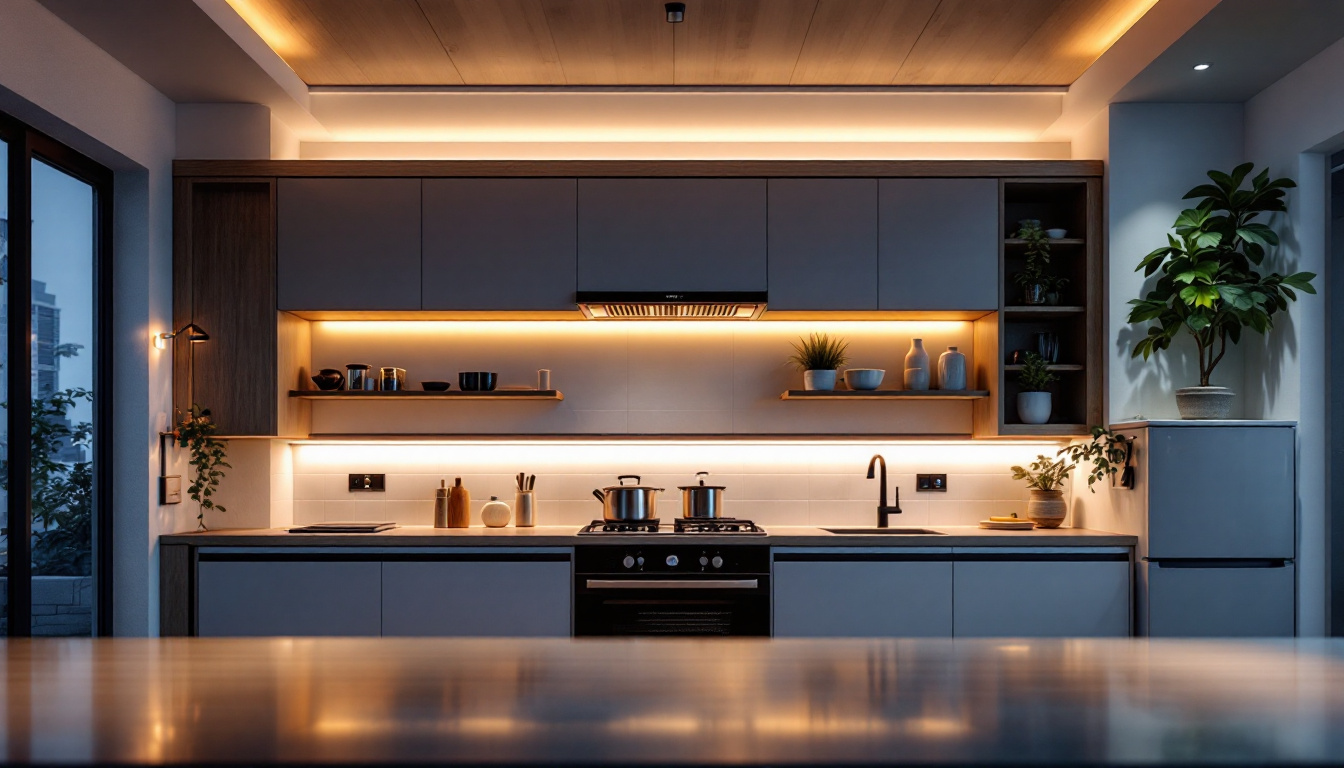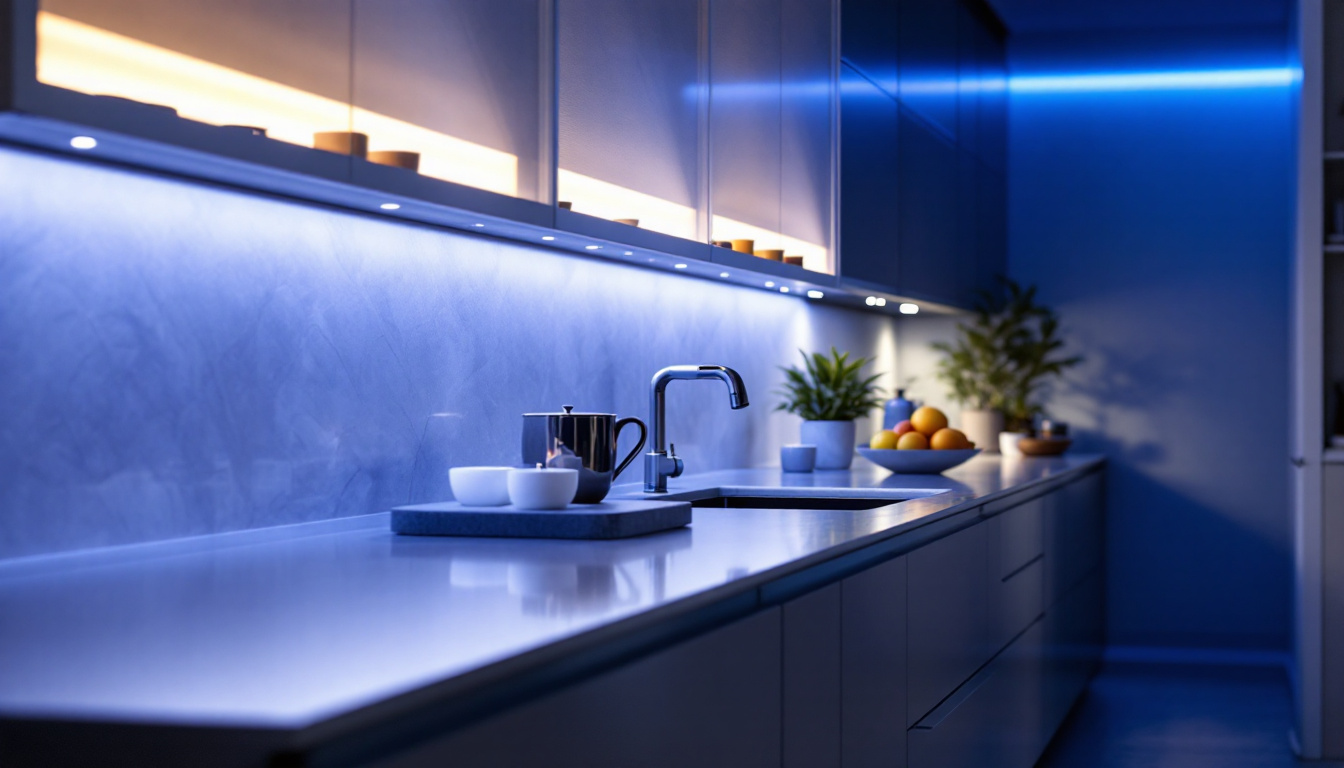

In recent years, the popularity of LED strip lights has surged, making them a favored choice among homeowners and businesses alike. These versatile lighting solutions offer a myriad of applications, from accent lighting to task lighting, and even decorative installations. As a lighting contractor, understanding the nuances of LED strip lights is crucial to meeting client expectations and delivering exceptional results. This article delves into what clients expect from lighting contractors regarding LED strip lights, covering essential knowledge, installation tips, and design considerations.
LED strip lights, also known as LED tape lights, are flexible circuit boards populated with light-emitting diodes (LEDs). They come in various lengths and widths, allowing for a high degree of customization. Clients appreciate these lights for their low energy consumption, longevity, and the ability to produce a wide range of colors. Moreover, the flexibility of strip lights enables installation in diverse spaces, including under cabinets, along staircases, and in coves. Their slim profile makes them particularly appealing for areas where traditional lighting fixtures would be cumbersome or visually intrusive.
One of the key features of LED strip lights is their ability to be cut to specific lengths, making them adaptable to various applications. This flexibility allows clients to achieve their desired lighting effects without the need for extensive modifications to their existing spaces. Understanding the technical specifications, such as lumens per meter, color temperature, and voltage requirements, is essential for contractors to guide clients effectively. Additionally, many LED strip lights come with adhesive backing, simplifying the installation process and ensuring a secure fit on various surfaces, from wood to metal and even drywall.
Clients may encounter several types of LED strip lights, each designed for specific applications. The most common types include:
By familiarizing themselves with these types, contractors can better advise clients on the best options for their specific needs and preferences. Furthermore, understanding the different applications of each type can help in designing cohesive lighting schemes that not only enhance aesthetics but also improve the functionality of the space. For instance, a combination of single color strips for task lighting and RGB strips for ambient lighting can create a balanced environment that caters to both work and relaxation.
Clients expect lighting contractors to adhere to professional installation practices when working with LED strip lights. This includes ensuring that the installation is safe, efficient, and aesthetically pleasing. Proper installation involves selecting the right adhesive or mounting hardware, as well as ensuring that the strips are securely attached to surfaces.
Moreover, clients appreciate when contractors take the time to plan the layout of the strip lights. This involves considering factors such as the location of power sources, the desired brightness, and the overall design scheme of the space. A well-thought-out installation not only enhances functionality but also elevates the visual appeal of the environment. For instance, the strategic placement of LED strips can create a sense of depth and dimension in a room, highlighting architectural features or artwork. Clients often look for innovative solutions, such as integrating the lighting seamlessly into furniture or cabinetry, which can transform ordinary spaces into extraordinary ones.
Understanding the electrical requirements of LED strip lights is paramount for contractors. Clients expect contractors to be knowledgeable about voltage ratings, wattage, and the need for appropriate power supplies. For instance, many LED strips operate on 12V or 24V, and using the correct power supply is essential to avoid damage to the lights.
Additionally, contractors should be aware of the importance of voltage drop, especially in longer runs of LED strip lights. Clients often expect contractors to address this issue by using thicker gauge wires or adding additional power supplies to ensure consistent brightness throughout the installation. Furthermore, clients may also inquire about dimming options and smart home integrations, as many modern LED systems can be controlled via smartphone apps or voice commands. This added layer of functionality not only enhances user experience but also aligns with the growing trend of energy efficiency and sustainability in home design. Clients are increasingly interested in how their lighting choices can contribute to a greener environment, making it essential for contractors to stay informed about the latest advancements in LED technology and energy-saving practices.
Clients frequently seek to create specific moods or atmospheres within their spaces using LED strip lights. Understanding how to manipulate color temperature and brightness is crucial for contractors. For example, warm white light can create a cozy and inviting atmosphere, while cool white light is better suited for task-oriented spaces.
Moreover, the placement of strip lights plays a significant role in achieving the desired ambiance. Clients may request indirect lighting solutions, such as placing strip lights behind furniture or in coves, to create a soft glow that enhances the overall aesthetic without being harsh or overpowering.
In an increasingly connected world, many clients expect their lighting solutions to integrate seamlessly with smart home technology. This includes the ability to control LED strip lights through mobile apps, voice commands, or home automation systems. Contractors should be familiar with various smart lighting options and how to install them effectively.
Understanding compatibility with popular smart home platforms, such as Google Home or Amazon Alexa, is essential. Clients appreciate when contractors can provide guidance on selecting the right smart LED strip lights and configuring them for optimal performance.
One of the common challenges associated with LED strip lights is heat management. While LEDs are generally more efficient than traditional lighting, they can still generate heat, especially in high-density applications. Clients expect contractors to address this issue proactively by recommending appropriate heat sinks or ensuring adequate ventilation in the installation area.
Contractors should also educate clients about the importance of using high-quality LED strips that are designed to dissipate heat effectively. This not only prolongs the lifespan of the lights but also ensures consistent performance over time.
Another challenge that may arise is color consistency across different LED strip lights. Clients often expect uniformity in color and brightness, especially when using multiple strips in a single installation. Contractors should be aware of the importance of sourcing LED strips from reputable manufacturers to ensure consistent quality.
Additionally, using strips from the same product line or batch can help mitigate discrepancies in color output. Clients appreciate when contractors take the time to explain these considerations and ensure that their installations meet their expectations.
Clients expect lighting contractors to provide guidance on the maintenance of LED strip lights. While these lights are known for their longevity, they still require some care to ensure optimal performance. Contractors should educate clients on how to clean the lights properly and check for any signs of wear or damage.
Providing clients with a maintenance schedule can be beneficial. This may include regular checks for dust accumulation, ensuring that connections remain secure, and monitoring the performance of the lights over time. Clients appreciate proactive support, as it helps them maintain their lighting systems effectively.
Clients often seek reassurance regarding the durability and reliability of their LED strip lights. Offering warranty options and support services can enhance client confidence in the installation. Contractors should be transparent about the warranties provided by manufacturers and ensure that clients understand the terms and conditions.
Additionally, providing ongoing support, whether through troubleshooting assistance or follow-up consultations, can foster long-term relationships with clients. This level of commitment not only meets client expectations but also positions contractors as trusted experts in the field.
As the demand for LED strip lights continues to grow, lighting contractors must equip themselves with the knowledge and skills necessary to meet client expectations. Understanding the various types of LED strip lights, installation best practices, design considerations, and maintenance requirements is essential for delivering exceptional service.
By prioritizing professional installation, addressing common challenges, and offering ongoing support, contractors can build strong relationships with clients and ensure their satisfaction. Ultimately, being well-versed in LED strip lights will not only enhance the quality of installations but also contribute to the overall success of lighting contractors in a competitive market.
Ready to elevate your lighting installations with the highest quality LED strip lights on the market? Look no further than LumenWholesale. Our spec-grade lighting products are designed to meet the rigorous demands of any project, ensuring you deliver exceptional service to your clients every time. With unbeatable wholesale prices and free shipping on bulk orders, you can access the best value without sacrificing performance or quality. Don’t let middleman markups affect your bottom line. Choose LumenWholesale for a seamless purchasing experience and watch your lighting projects shine. Visit us now at Wholesale Lighting at the Best Value and make the smart choice for your business.

Discover why purchasing security and motion sensor lights in bulk from local distributors might not be the best choice.

Discover the critical elements that lighting contractors frequently miss when designing industrial kitchen lighting.

Discover how LED under-counter lighting is revolutionizing the projects of lighting contractors.

Discover the essential insights and benefits of floodlights for lighting contractors.
Get notified when NEW deals are released.
Optimize your budget with wholesale discounts.
Only top-quality, specification-grade lighting products.
No additional costs at checkout - what you see is what you pay.
We understand the unique needs of contractors.